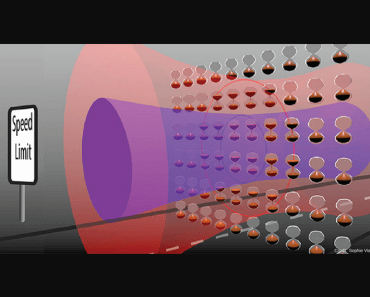In a recent study, physicists at Chalmers University of Technology in Sweden have identified why light-based technologies are subject to “speed limits” that make it impossible for optical switches to transmit information beyond a certain speed.
In the drive to make technologies ever more efficient, engineers have been exploring ways to use light, rather than electricity, to represent and transport information.
While electronics have enabled the creation of remarkably powerful computers, we are starting to find that there are limitations to using electricity as the basis of our technologies. That is to say that we can only make our microchips so small, and there are limitations on the speed that metallic wires can transmit information.
Optical computers — or computers that use photons instead of electrons — offer an encouraging alternative. Some believe that optical technologies are the future. They could be far faster, more energy-efficient, and even store more information.
To make this dream a reality, however, optical engineers must find a way to overcome limitations on the control of light.
All technologies that process light, from visual displays on cell phones and televisions to optical cables, require the use of optical switches. Optical switches are used to change the color or intensity of light communicating information at high rates — up to 100 billion times in a single second in internet traffic.
While this is undeniably fast, it is still not fast enough to compete with traditional electronic transistors.
“Currently, optical cables transport information over large distances, but the processing of the information is still done by converting light to electronic signals which are processed by electronic transistors,” said Sophie Viaene, a nanophotonics researcher at the Department of Physics at Chalmers and lead author of the study.
“Hopes are that, if optical switches become as fast, energy-efficient, and compact as electronic transistors, information could be transported and processed without the need to convert to electric signals.”
In an effort to overcome this speed limit, optical engineers have recently developed artificial specialty materials known as optomechanical metamaterials. These special materials are designed to overcome the limitations that natural materials are subject to.
“An optomechanical metasurface consists of many elastic elements whose mechanical configuration determines how light is processed,” said Viaene.
“The properties of such a metasurface can be controlled with an external optical beam, which exerts an optical force that changes the configuration of elements on the surface. In particular, by changing the power of the optical beam, the metasurface experiences different optical forces and switches from one state to another. Because an optical beam is a wave with a high oscillation frequency, researchers were hoping to use optomechanical metasurfaces for fast switching.”
Despite high hopes, optomechanical metamaterials still cannot breach these speed limits, and have not yet outperformed existing, electron-based technology.
“It turns out that fast switching is not possible, because the interaction between the elastic elements and the optical beam is nonlinear, so that for specific configurations the system is very slow,” Viaene continued.
Viaene sought to understand exactly why optical switches, even those based on optomechanical metamaterials, could not get past these speed limits. In order to do so, Viaene examined the nonlinear dynamics of the metasurface elements under the influence of an optical force.
To determine the speed of optical switches, one has to know how fast the elastic elements on the metasurface move from one configuration to another. In this case, the force on the elastic elements is strongly determined by the configuration of the element. In other words, the dynamics between the elastic elements and the optical beam is nonlinear.
The researchers found that the nonlinear dynamics, which leads to strange phenomena like critical slowing down for configurations associated to low forces, plays an important role in limiting the speed of optomechanical switches.
They drew two major conclusions.
“First, the optical switch suffers from a critical slowing down in regimes that were thought to be favorable to switching,” said Viaene.
“Second, there is a fundamental speed limit that applies to all frequencies of the optical beam, which prevents the metasurfaces from being faster than the switching speed of electronic transistors.”
Effectively, this means that as currently designed, optomechanical metasurfaces won’t be of much use for high-speed switches. They simply aren’t capable of breaking past these speed limits.
While this does not bode well for those who hope to one day see optical computers become a reality, it doesn’t mean that optomechanical metasurfaces are completely useless.
Viaene said that they can still be very useful inside technology that doesn’t require high speed switches, such as optical wearable technology like smartwatches and Google Glass. These materials are thin and can be flexible, potentially making them more useful than electronics.
The study may also lead to new design approaches that can overcome the speed limits.
“One option is to manipulate one particle at a time instead of an entire surface, so the interaction with light is controlled more efficiently,” Viaene said.
“Another option is to make the metamaterial elements move continuously at a fixed speed and to record variations of this movement.”
The paper detailing the study is published in the journal Physics Review Letters.
The research team also included Philippe Tassin, an associate professor of physics at Chalmers, and Vincent Ginis and Jan Danckaert from the Vrije Universiteit Brussel and Harvard University.



